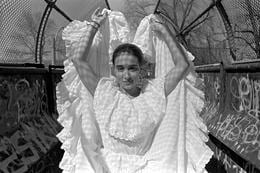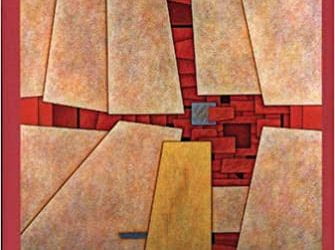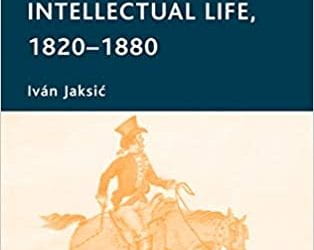All Tangled Up in Tango

Alba Barberia’s father sits on the piano bench with orchestra. Photo courtesy of Alba Barberia.
Entanglements are hard to explain. My life probably started with a tango, playing along in the radio close to my mother and my first screaming efforts to breathe.
Radio was so important in people’s lives then, and tango meant a lot to my father. He sang it in the shower, whistled it on his way to work and made the house stand still in the night when he would sit at the piano and deliver a performance worthy of a place on the stage of the Colón Theatre. The notes would minimize our childish and mischievous pranks because it was almost impossible to concentrate on anything else; the music was so powerful, so emotional, so full of meaning that we were perhaps too small to grasp.
My Mom would hum the words softly to my brothers and me. Later on, when we inquired about them, she would recite the lyrics of the songs by heart, enhancing the hidden poetic images She never sang them.
When we complained that we did not understand this music, Dad played us “La Calesita,” a song that led our imaginations to wander about the twirling Buenos Aires merry-go-rounds, the neighborhood cobbled stones streets and shady plazas and the thrilling experience of winning a free ride by chance with “la sortija.” He told us stories about his days in the big city, his colorful Italian grandfather, Radio El Mundo and one of his favorite tango innovators Julio De Caro, stories that proved to be more interesting than Cinderella or Bambi. He found among our favorite toys a bandoneon keyboard and explained about his orchestra’s days in my hometown of Esperanza, Santa Fe, in Argentina, where he played since he was 17, and about the voice hidden in the instrument’s deep bellows. We were mesmerized for days, caressing the mother-of-pearl keys and dreaming about its voice. I guess that we imagined it was some sort of Aladdin’s lamp, and the voice of tango would rise from it at any given moment.
Adolescence brought different emotions and then the lyrics of tangos gained more of a meaning. The complexity of the world of adults and the subtleties of human relations were finally making sense to me. Then came love, marriage, three beautiful children, the efforts of adjusting to a new culture, a new place in the planet.
Years went by and my husband was the one that brought tango to me in a whole different level. He took me by the hand to a different world: dance, a new love that opened the Pandora’s box of my musical childhood memories. He has a truly Milonguero heart and gave me the courage to try to dance tango. I never imagined that after thirty years of living together, we would discover a new language, a new way of communicating. We did not start dancing at thirty or at forty, we started to live and breathe tango at the age most people start liking elevator music or using medications against arthritis.
I was self conscious and timid, always afraid to make mistakes or to be laughed at, but his enthusiasm pulled me, and he dragged me to the very first lessons. It was an amazing discovery, the thrill of understanding the meaning of a slight pressure in the back, a tighter embrace, a swing of the hips, a hint of a step. I learned dance movements that seemed to contain a true philosophy of life: respect your partner, wait for his guide, adorn the silences with beautiful gestures, and try not to get stepped on!
We found live tango music thousands of miles from Argentina at a Las Vegas casino. It felt like Ali Baba discovering the cave full of treasures: the gripping sound of the bandoneón made our hearts miss a few beats with a shock. We started a feverish search for opportunities to learn and improve our skills and places to dance, even special shoes to wear. We found workshops, places to practice, fantastic teachers and Milongas from California to New York to Miami.
Tango started lingering behind every one of our projects and every trip. The most important part of any vacation or trip was searching for a nearby Milonga—a term we thought an exclusive to Argentina’s lexicon, that had become universally popular—so specific details about where and when to dance were floating on cyberspace waiting for our searches.
Sharing the music that awakens so many memories in me did not come easy. Sometimes I would watch people dancing and wondered if they were gripped by tango the way I was, if an emotional load was putting a lump in their throats or a tear in their eyes. I did not want the music distorted, stereotyped or misinterpreted as a whole bunch of mechanical, showy steps, the rose clasped between the teeth, the gash in the short skirt. I wanted to dance tango in a way that will make everyone understand the way it was born and raised in the streets of Buenos Aires; the true voice of the people: without distinctions of social status, skin color, profession, job, age or income level: authentic, genuine, tender, humane, arrogant, bittersweet and passionate. After dancing tango for about six years, mostly in the United States, after so many beautiful experiences, after meeting so many wonderful people and making the dearest of friends, I have come to the conclusion that tango does not need explanations, translations, comments or historical quotes. I have witnessed the music of my beloved country engulfing and enrapturing people of different ages, size, shapes and colors in this country too. I know now that tango will continue its magical journey through the hearts and bodies of people, just because, in this technologically savvy, individualistic, material world, every one can still be bewitched by the warmth of a simple, natural, powerful, warm, deeply felt embrace.
So, here we are, waiting for the next Milonga the way an adolescent awaits Prom Night, and thanking my dear Argentina for this perpetual, exhilarating, passionate entanglement with the dance and the music of Tango.
Fall 2007, Volume VII, Number 1
Alba Barberia is a trained child therapist, who lives in Santa Maria, California, with her husband and dance partner, Juan Mario. Lorena Barberia, a long time DRCLAS staff member, is her oldest child. Alba’s father, Alejandro N. Balboni (1914-2006), was a piano player in several small orchestras in Esperanza, Argentina. His recordings have not survived. Alba recommends www. planet-tango.com or www.tangoaficionado.com
Related Articles
Disruption in the Immigrant Experience: Colombian Youth Dance Their Way to Continuity
Imagine you are fifteen years old. As an immigrant who has lived in the United States for a few years, you are still trying to find your place. You decide to join a group that dances the traditional dances of your country. You practice every week on Fridays, when you could be going to the movies or hanging out with your friends. Your goal is to perform in that big annual show a lot of people have told you about. That day has finally …
Review of Connecting Lines: New Poetry from Mexico
Lou Dobbs and other talk show hosts want us to believe that a so-called Mexican invasion is denying “true” Americans their jobs, democracy and destiny. Few among them comment on a peaceful, more subtle Mexican “invasion” that will help us see why fears of blending Mexican and U.S. culture are misplaced. One by one, since the turn of the century, anthologies of a Mexican poetry trumpeting innovation and diversity have been …
Review of The Hispanic World and American Intellectual Life, 1820-1880
Iván Jaksić’s highly original and engaging scholarship on the origins of U.S. academic interest in Ibero-America brilliantly reveals previously unknown trans-Atlantic and Western hemisphere intellectual networks. His research focuses on the life, interactions and contributions of those Jaksić calls“the pioneer American scholars and lifetime students of the Hispanic World”—Washington Irving, George Ticknor, Henry Wadsworth …




